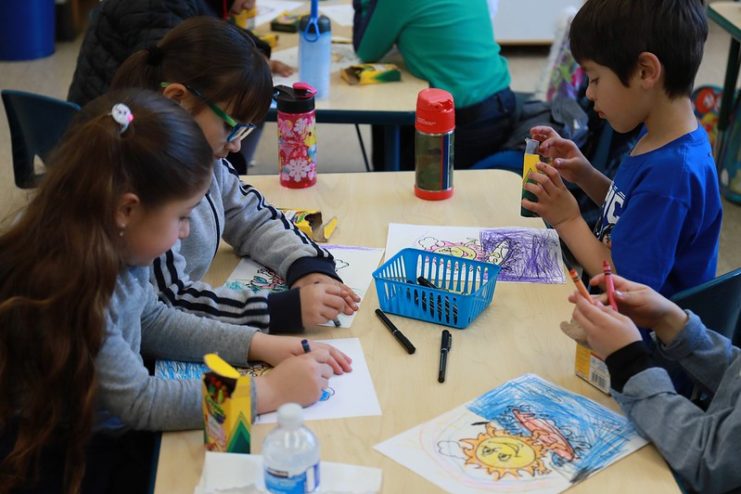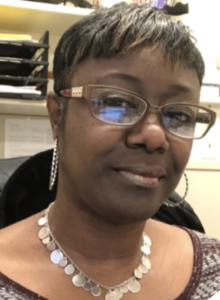
Beyond Sorting Students: Deepening teachers’ purposeful use of data to drive instruction
What does it mean to get sophisticated about how we use student data? This was a question our Instructional Leadership Team, ILT, pondered during our first Vision and Inquiry Session with Lead by Learning, a series designed to support, develop, and systematize participatory leadership at our school. Encouraged that teachers were more routinely collecting and looking at student data than they had in the past, we felt we were poised to go deeper. Our data routine was an important first step but felt something was missing. We wanted teachers to use student data in more purposeful ways; in ways that resulted in meaningful adjustments to their practice. But what did that mean?
“Parallel Play”:
As we began looking more specifically at how teachers were using their student data, we observed that they were mostly using it to sort students into those who “got it” and those who didn’t. We also observed that during Professional Learning Community, PLC, time teachers were engaged in a sort of adult version of “parallel play.” They planned next to one another, showed each other their data, and shared out about what they were doing in their classroom, but they weren’t necessarily building understanding together about what they saw in each other’s data and what adjustments they might try in light of what they were seeing. Instead of simply sorting data into achievement levels and planning in parallel we wanted teachers to look together at data and collectively ask themselves questions like:
- What success are we looking for? Why?
- Is this the right data to show us what a student knows/understands related to this success?
- How does this data help me think about access and rigor?
- What does this data suggest about next steps?
Moving Toward Powerful Conversations
To support teachers to get to these deeper questions, at first we tried a basic conversation protocol that asked people to state what they noticed in their data. But that didn’t help teachers dig into what in their practice was supporting their learning goals for students, what was working, what wasn’t, and how they could tell. We didn’t feel like that basic protocol was getting everyone to the depth of sense-making and shifts in practice that we know make a difference for students.
As we reflected further on what different PLC groups were actually doing, we realized that those groups who seemed to get deeper with their conversations had a stronger understanding of the purpose of the conversation, and a stronger collective sense of their PLC goals. As we discussed this uneven success, we realized that we hadn’t really been explicit about the questions we were hoping people would ask themselves, or given people time to set an individual or collective intention for their collaborative conversations.
In light of these new understandings from our deep dive into what was happening for our teachers, we decided to adapt Lead by Learning’s participatory leadership structures and approach by trying the following:
- More explicit framing around the questions we were hoping people would ask themselves about their data, and why those questions were important.
- Moments for Lead by Learning’s Public Learner approach to model their wonderings aloud for the group and invite collaborative dialogue and multiple perspectives.
- More intentional transition between “Professional Development” time and “PLC” time by including time for people to “think alone” (jot down their thoughts) about what they noticed in their data and what they needed help thinking about from their colleagues. This helped people enter into their PLC conversations with a stronger sense of purpose and agency.
- Lead by Learning’s richer conversation Public Learning protocol to include time for each teacher to share their data, thinking, and uncertainties, ask each other questions to help each other get clearer about their goals in light of the data, and help each other arrive at next steps.
- Explicit time for teachers to say (and write) what they were “thinking now” about next steps. This built agency and ownership around teaching practice, and also helped people remember what they were planning to try!
- A whole group gallery walk in which teachers displayed student data (work samples, video, audio, etc.) and walked around putting sticky notes on each other’s data to point out something they noticed. The gallery walk was followed by a discussion in which people shared insights they had gained from their colleagues’ sticky notes.
When our ILT met for our final Vision and Inquiry session in February, there was a lot to celebrate. The new framing, collaboration protocols and learning experiences we tried seemed to be moving us forward. Teachers were now focusing more on what they saw students doing, rather than simply sharing lesson plans with one another. Teachers were beginning to talk more concretely about next instructional steps in light of their data. In the gallery walk discussion, one teacher reflected that they realized their current data wasn’t showing them what they wanted to know, and wanted support to figure out what kind of data they should collect instead. This was the more purposeful use of student data we were looking for.
Student Growth and The Road Ahead
The deep learning teachers were engaged in truly had an impact on student learning. Based on the constructed response section of the IAB, the percentage of 3rd – 5th grade students scoring at “Standards Not Met” significantly reduced from 59.8% to 35.7% and students scoring at “Above Standards” increased from 6% to 15.1%. Now that our staff has built their capacity to collaboratively use student data in a more purposeful way, a word that is on our minds is continuity. Teachers are naming important next steps in light of their data, but are not necessarily bringing new data from that next step when the PLC reconvenes. What we envision for our PLCs is a continuous cycle in which teachers focus on a small segment on their teaching, look at student data from that with their colleagues, try an adjustment in light of the data, and then return to their PLC with data from that adjustment. It is this kind of continuity that will allow us to understand the effectiveness of our changes in practice. We’re excited about how far our students can go if we have this kind of continuous, purposeful, focused teacher collaboration.
 Tammie Adams is the Principal of Horace Mann Elementary School in Oakland, CA. Tammie was born and raised in Oakland, and attended Oakland Public Schools until 5th grade. Both of her parents retired from teaching. She received her Bachelors and Masters Degree, in addition to her teaching credential from CSU Hayward. Additionally, Tammie is National Board Certified as an Early Childhood Generalist. This year is her 24th year in OUSD. Tammie participated in our Vision and Inquiry Session alongside her teacher leaders last year and this year is part of our SEL Principal Leadership Group with Oakland Unified School District.
Tammie Adams is the Principal of Horace Mann Elementary School in Oakland, CA. Tammie was born and raised in Oakland, and attended Oakland Public Schools until 5th grade. Both of her parents retired from teaching. She received her Bachelors and Masters Degree, in addition to her teaching credential from CSU Hayward. Additionally, Tammie is National Board Certified as an Early Childhood Generalist. This year is her 24th year in OUSD. Tammie participated in our Vision and Inquiry Session alongside her teacher leaders last year and this year is part of our SEL Principal Leadership Group with Oakland Unified School District.
